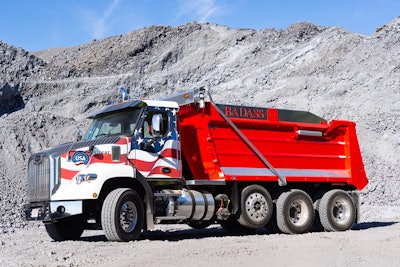
General Motors is setting its sights on a return to heavy-duty trucking... kind of.
The Detroit automaker, which exited Class 8 trucking with the wind down of the GMC General in 1987, has announced a deal with Autocar that will create a range of zero tailpipe emissions vocational vehicles powered by GM’s HYDROTEC power cubes.
Production of the first hydrogen fuel cell-powered vehicles – the first of which will be cement mixers, roll-off and dump trucks, followed by refuse trucks and yard tractors – is expected to start in 2026 at Autocar's manufacturing facility in Birmingham, Alabama.
“We have carefully studied existing severe duty vocational trucks to understand their specific demands and requirements,” said Johann Vorster, president of TRIZ Engineering, the firm that will handle integration support for power distribution between the fuel cell and batteries. “With GM and Autocar, we have built a fuel cell application that is unique within vocational vehicles — giving severe duty trucking more options to be truly rugged and capable of achieving zero tailpipe emissions.”
These jointly developed trucks will be powered by GM’s compact HYDROTEC power cubes, GM’s fuel cell propulsion system solution for commercial vehicles. Each power cube contains more than 300 hydrogen fuel cells, along with thermal and power management systems and proprietary controls to fuel cell and battery life and performance while optimizing cold start capability. The HYDROTEC power cube provides 77 kilowatts of power and multiple power cubes can be arrayed in a vehicle for higher power ratings.
Fuel cells combine hydrogen and oxygen to generate electricity through an electrochemical reaction. The fuel cell enables the conversion of energy stored in hydrogen into electricity to power a vehicle. Batteries store electricity that is captured from regenerative braking or created by the HYDROTEC power cubes.
“EV propulsion systems like GM’s Ultium Platform are great solutions for electrifying passenger vehicles, but larger vehicles like Autocar’s class 8 trucks, refuse trucks and terminal tractors require robust solutions that enable significant energy carrying capacity and fast refueling times,” said Charlie Freese, GM executive director, Global HYDROTEC. “We want to enable zero tailpipe emissions solutions for the largest, highest energy consuming vehicles, and fuel cells are ideal for the most energy intensive applications.”
GM in 2021 announced a partnership with Navistar, to integrate its HYDROTEC system with the International RH, targeting a range of more than 500 miles and a hydrogen fueling time of less than 15 minutes.








